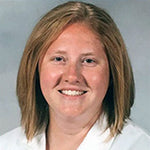In Office Laboratory
At Southern Women's Health, we perform blood tests and other routine laboratory procedures right in our office, eliminating the hassle of visiting a separate testing lab before or after your appointment.
LIPIDS | Hemoglobin, Cholesterol, and Glucose
What do these numbers mean?
Hemoglobin is a protein based component of red blood cells which are primarily responsible for transferring oxygen from the lungs to the rest of the body.
Hemoglobin Targets
- Less than 12.0 = Anemic
- 12.1 to 15.1 = Normal
Total Cholesterol (TC) is determined by the amount of cholesterol you eat and the amount of cholesterol your body makes. A total cholesterol level greater than 200 is a risk factor for heart disease and stroke. Your total cholesterol reading will include good and bad cholesterol. Therefore if your good cholesterol is high, this will elevate your total cholesterol.
Total Cholesterol Targets
- Less than 200 = Desirable
- 200 to 239 = Borderline
- Greater than 239 = High
HDL Cholesterol or high density lipoprotein is the "good" cholesterol. HDL carries cholesterol away from the arteries and back to the liver to be removed from the body. High levels of HDL protects against heart disease, while low levels of HDL put you more at risk for heart disease. To raise your HDL cholesterol levels, stop smoking, lose excess weight, exercise, and increase the amount of fiber and monounsaturated fats in your diet. Monounsaturated fats can be found in olive, canola, peanut, sunflower, and safflower oils.
HDL Cholesterol Targets
- Less than 50 = Low
- 50 to 60 = Desirable
- Greater than 60 = High
Triglycerides (TRG) are a type of fat made in the body. High triglycerides are an independent risk factor for heart disease and stroke. To lower your triglyceride levels, lose weight, increase physical activity, stop smoking, and limit alcohol consumption. Changes in your diet, including decreasing carbohydrate consumption and increasing omega 3 fatty acids and fiber, can also decrease triglyceride levels. Omega 3 fatty acids can be found in trout, salmon, tuna, and walnuts or in a supplement available at drugstores.
Triglyceride Targets
- Less than 150 = Optimal
- 150 to 199 = Borderline
- 200 to 499 = High
- Greater than 500 = Very high
LDL Cholesterol or low density lipoprotein is the "bad" cholesterol. When there is too much LDL in the blood, it joins with fats and other substances to form a plaque in the walls of arteries. These plaques cause a narrowing of the arteries and reduced blood flow. If part of a plaque breaks off from the artery, it may cause a heart attack or stroke. To decrease LDL cholesterol, limit saturated and trans-fats, increase fiber, exercise, and lose weight.
LDL Cholesterol Targets
- Less than 100 = Optimal for people with heart disease or diabetes
- 100 to 129 = Near or above optimal
- 130 to 159 = Borderline high
- 190 or more = Very high
Total Cholesterol/HDL Ratio (TC/HDL)
The ratio is obtained by dividing the HDL cholesterol into the total cholesterol.
TC/HDL Targets
- Less than 3.5 = Optimal
- Less than 5.1 = Normal
Glucose is a simple sugar that provides the body with its primary source of energy. This type of sugar comes from digesting carbohydrates into a chemical that the body can easily convert to energy. When glucose levels in the bloodstream aren't properly regulated, a person can develop a serious condition, such as diabetes.
Glucose Targets
- Less than 100 = Normal
- 101 to 125 = Pre-Diabetic
- Greater than 126 = Diabetic






